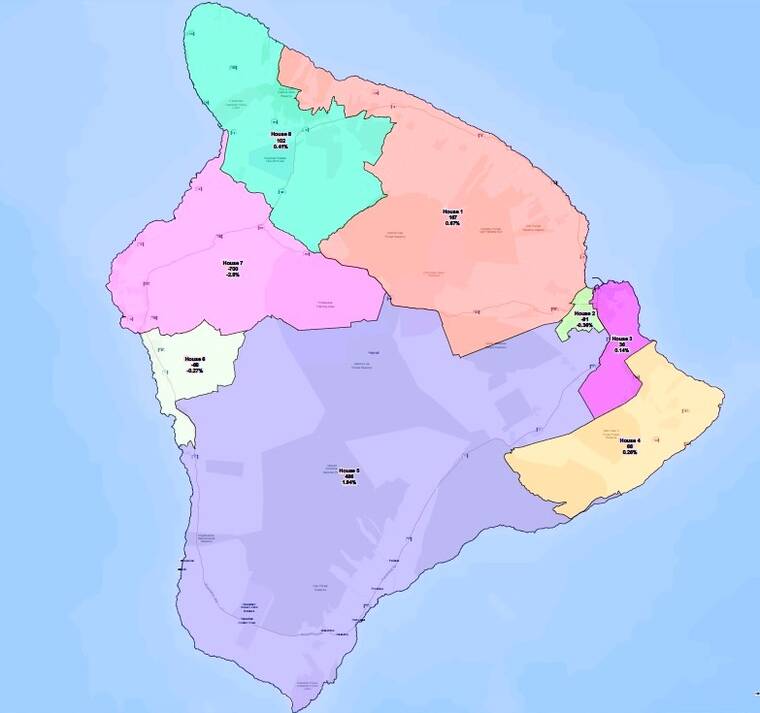Attorneys for the state Reapportionment Commission and a citizen coalition challenging its maps will square off today in oral arguments before the Hawaii Supreme Court.
The court put a temporary hold on candidate qualifying for state legislative offices and federal House races until it can consider the petition. Qualifying for statewide and county government seats, however, has begun. Candidates must have filed their paperwork by June 7 to be on the ballot.
The challengers of the once-in-a-decade drawing of the maps for political boundaries contend the bipartisan nine-member commission did not comply with requirements of the state constitution and state law in creating the maps.
Three principal points raised by the group are that state House districts are not contained within state Senate districts, that state legislative districts are not contained within congressional districts and that a four-member subcommittee, known as a permitted interaction group, created the maps behind closed doors with no way for the public to understand why decisions were made.
The petition asked the Supreme Court to declare the political maps invalid and direct that the state withdraw them and draw new ones.
“Fair and impartial redistricting is fundamental in a representative democracy to ensure it is the people who choose their representative, not the other way around,” Mateo Caballero, attorney for the petitioners, said in a press conference last month announcing the lawsuit. “The petition to the Hawaii Supreme Court seeks to give the people of Hawaii a better chance to democratically address the serious challenges that their communities and islands will face during the next 10 years.”
The state, meanwhile, in a 50-page response filed Friday, contends the state constitution requires the Reapportionment Commission to consider a set of eight guidelines that includes the district-within-a-district concept, but it does not require the commission to adopt all of them. For four guidelines, including district-within-a-district, the framers of the constitution “purposefully refrained from stating in mandatory terms,” the response, signed by Deputy Attorney General Lori N. Tanigawa, stated.
In addition, the state said, a permitted interaction group, in this case the Technical Committee, is allowed under the state Sunshine Law. If that law was violated, the plaintiffs had other channels to object, such as through the Office of Information Practices or the circuit court, but did not do so within the 90-day timeline outlined in law, the response said.
“Undoing the Technical Committee now, only after the bi-partisan group of four Commissioners recommended congressional plans, drew and revised legislative plans following eleven public hearings, and again in response to new extraction figures, and after the Commission adopted the congressional and legislative plans, would cast doubt on the entire reapportionment process and could lead to an unprecedented delay in the elections,” the response said. “Petitioners may not really want what they say they want.”
Oral arguments are scheduled to being at 2 p.m. today. The public can view the proceeding at YouTube.com/hawaiicourts.
Email Nancy Cook Lauer at ncook-lauer@westhawaiitoday.com.






